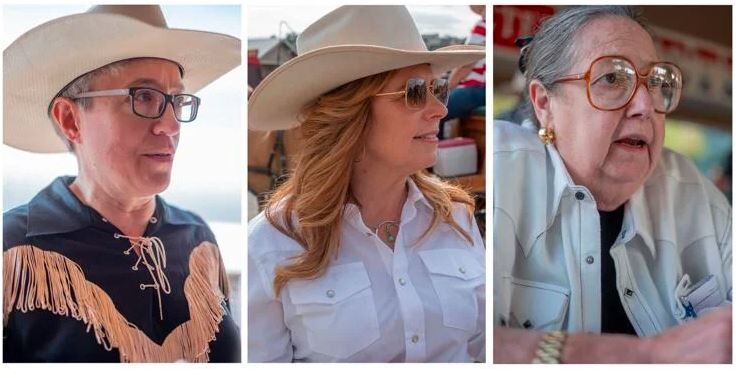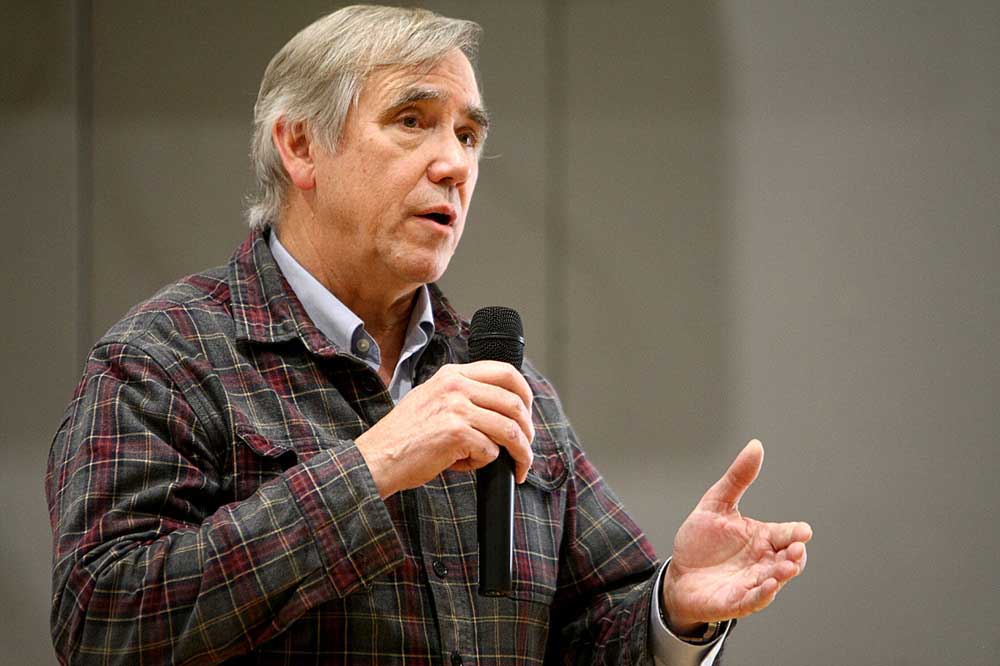Tight governor’s race has torrent of new cash coming into campaigns
Published 3:00 pm Thursday, September 22, 2022

- Democrat Tina Kotek, Republican Christine Drazan, and unaffiliated candidate Betsy Johnson, shown at the Pendleton Round-up. The trio will debate in Bend on Tuesday evening at OSU-Cascades
The money fight in the campaign for governor has moved into the heavyweight division as the race approaches the Nov. 8 election.
On Monday, Republicans threw a surprise financial right-hook with the party’s governor’s association punching $1 million in new cash to GOP nominee, Christine Drazan.
Trending
On Thursday, Democrats answered with a left smash as their national governor’s association jabbed $1.2 million in cash to Democratic nominee Tina Kotek.
For those keeping score, the Democratic governors have given Kotek a total of over $3.1 million so far. The Republican governors have sent over $2.5 million to Drazan.
The question now is if Nike founder Phil Knight will answer with a bankroll uppercut of his own to keep non-affiliated candidate Betsy Johnson ahead of the competition for cash. He’s given $1.75 million to date, but nothing since late April.
Counting cash stashes
As of Saturday afternoon, the increasingly staggering sums in the governor’s race have topped $31.2 million, according to records filed with the Oregon Secretary of State Elections Division.
Having three major candidates in the race puts 2022 on a pace to easily eclipse the record $40 million in spending set in 2018, when incumbent Democrat Gov. Kate Brown defeated Republican Knute Buehler, the former state representative from Bend.
Trending
The totals so far:
• Kotek: $10.46 million raised since the beginning of last year and $7.99 million spent. The Democrat has nearly $2.48 million in the bank.
• Drazan: $9.24 million raised and $6.94 million spent. The Republican has $2.38 million in the bank.
• Johnson: $11.5 million raised and $9.5 million spent, with $2.55 million in the bank.
At first glance, it would appear the trio are about tied in funds they have to spend between now and the end of voting — but with one big caveat.
Johnson is using the maximum legal period of 30 days to file campaign transactions. Drazan and Kotek are reporting more rapidly — usually in under one week.
All of that changes Sept. 27. That’s the date the Secretary of State will require campaign contributions and spending be reported within seven days.
That’s also the evening when the three major candidates will have the next debate at Oregon State University-Cascades in Bend.
But the reality is the campaign window is much closer to closing.
It’s one month until the Oct. 18 deadline to register to vote.
Ballots will be mailed to in-state voters beginning Oct. 19.
Campaigns have one month to reach all voters. After ballots arrive, they will begin to be marked and returned.
Oregon’s vote-by-mail system means each passing day after that, the number of voters who can influence the election will decline.
Key forecaster calls race “a toss-up”
The flurry of funds comes against the backdrop of the unique three-way race that has upended the usual dynamics of Oregon elections for governor.
Republicans last won the governorship in 1982, when Gov. Vic Atiyeh won re-election. Since 1986, Democrats have won the state’s top executive position.
Oregon is a small state with little accurate and non-partisan political polling that meets a reliable standard. That has made top political forecasters in Washington, D.C. a key barometer of how the governor’s race is unfolding.
Last last week, Cook Political Report, moved its rating of the Oregon race from “leaning Democratic” to “toss-up.”
Jessica Taylor, The Cook Political Report analyst for governor’s races, said Johnson’s successful petition drive to put her on the ballot with Kotek and Drazan meant Democrats’ 40-year lock on the governor’s job was questionable.
“No race for governor has been more surprising than Oregon,” wrote Taylor.
With Gov. Kate Brown unable to run again because of term limits, the 2022 election would be the first time since 2002 that no incumbent or former Oregon governor would be on the ballot.
The Democratic primary drew 15 candidates, with Kotek winning a clear mandate with 56% of the vote
Republicans field 19 primary candidates, with Drazan emerging from the splintered field with 22.5% of the vote as the GOP nominee.
Kotek has been the frontrunner from the start of the campaign season last year.
The outlines of the race began to shift last autumn with Johnson, a longtime moderate Democratic state senator, announcing she would leave the Senate and the Democratic Party to run for governor without a party affiliation.
Oregon has elected one independent governor — Julius Meier in 1930.
The mix became even cloudier when Drazan won 22.5% of the Republican primary. In a field that featured several strong backers of former President Donald Trump running as outsiders, Drazan was a Republican legislative leader who had rejected Trump’s claims that the 2022 election had been stolen by Democrat Joe Biden.
Drazan follows the GOP line as an anti-abortion, anti-gun control, pro-business candidate. But as a woman lawmaker representing the key Portland suburbs of Clackamas County, Drazan, she was an outlier among the possible Republican standard-bearers in Oregon for 2022.
The Cook Political Report wrote that national GOP leaders had planned to make a big push for governors seats in “Rust Belt” states like Pennsylvania and Michigan. But the results of the closed Republican primaries left the party “saddled with weak and cash-poor candidates” with questionable chances in a general election.
Searching for other options, the emergence of Drazan and the three-way race in Oregon became a target.
While Drazan’s stances on key issues doesn’t match up with majorities in Oregon public polls on issues like abortion and guns, the three-way race offered a difficult if plausible path to victory, The Cook Political Report forecasts have shown.
For national GOP leaders, her credibility as someone who wants to change politics from the inside instead of run as an outside agitator might appeal to the third of voters who are not members of any political party.
Put together, it encouraged the national GOP to switch its strategy into a big push for an upset in Oregon.
The result, the Cook Political Report says, is that Kotek and Drazan are “neck-and-neck,” Taylor wrote.
Taylor said voters were moving toward Drazan as the stronger candidate who was not Tina Kotek.
“Former state Sen. Betsy Johnson — a bespectacled former Democrat-turned-independent — threatens to act as a spoiler,” Taylor wrote. “There’s a clear trend of both Kotek and Drazan polling in the low 30s.”
Johnson, Taylor wrote, hasn’t been able to displace Drazan as the alternative to the Democratic hold on the state’s top job.
In a Twitter message on Saturday, Johnson said she saw The Cook Political Report update differently.
“This is a clear sign that Oregonians are uniting across party lines for BIG change,” Johnson wrote.
Johnson, Taylor wrote, hasn’t been able to displace Drazan as the alternative to the Democratic hold on the state’s top job.
Like other forecasters at the Center for Politics at the University of Virginia and at FiveThirtyEight.com, the winner of the election in November may need to only break the 40% mark to win a plurality.





